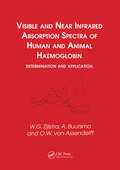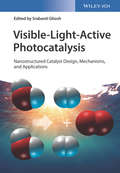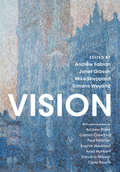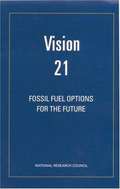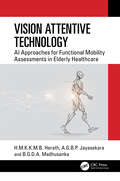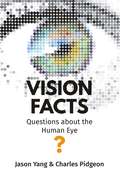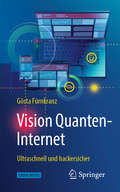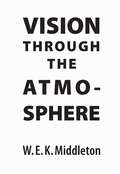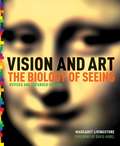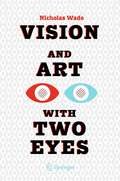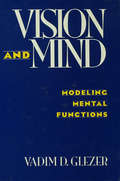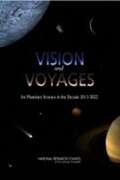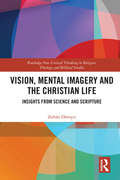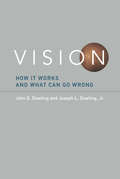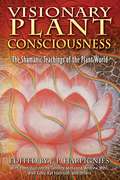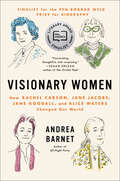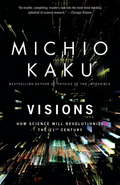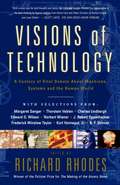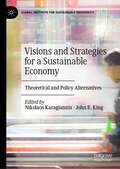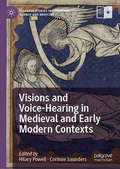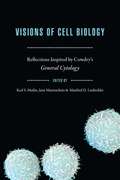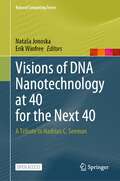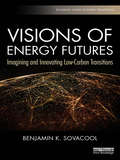- Table View
- List View
Visible and Near Infrared Absorption Spectra of Human and Animal Haemoglobin determination and application
by Willem G. Zijlstra Anneke Buursma Onno W. van AssendelftThe bright colour of haemoglobin has, from the very beginning, played a significant role in both the investigation of this compound as well as in the study of blood oxygen transport. Numerous optical methods have been developed for measuring haemoglobin concentration, oxygen saturation, and the principal dyshaemoglobins in vitro as well as in vivo.
Visible-Light-Active Photocatalysis: Nanostructured Catalyst Design, Mechanisms, and Applications
by Srabanti GhoshA comprehensive and timely overview of this important and hot topic, with special emphasis placed on environmental applications and the potential for solar light harvesting. Following introductory chapters on environmental photocatalysis, water splitting, and applications in synthetic chemistry, further chapters focus on the synthesis and design of photocatalysts, solar energy conversion, and such environmental aspects as the removal of water pollutants, photocatalytic conversion of CO2. Besides metal oxide-based photocatalysts, the authors cover other relevant material classes including carbon-based nanomaterials and novel hybrid materials. Chapters on mechanistic aspects, computational modeling of photocatalysis and Challenges and perspectives of solar reactor design for industrial applications complete this unique survey of the subject. With its in-depth discussions ranging from a comprehensive understanding to the engineering of materials and applied devices, this is an invaluable resource for a range of disciplines.
Vision (Darwin College Lectures)
by Carlo Rovelli Paul Fletcher Andrew Blake Carolin Crawford Sophie Hackford Anya Hurlbert Dan-Eric NilssonArising from the 2019 Darwin College Lectures, this book presents essays from seven prominent public intellectuals on the theme of vision. Each author examines this theme through the lens of their own particular area of expertise, making for a lively interdisciplinary volume including chapters on neuroscience, colour perception, biological evolution, astronomy, the future of technology, computer vision, and the visionary core of science. Featuring contributions by professors of neuroscience Paul Fletcher and Anya Hurlbert, professor of zoology Dan-Eric Nilsson, the futurist Sophie Hackford, Microsoft distinguished scientist Andrew Blake, theoretical physicist and author Carlo Rovelli, and Dr Carolin Crawford, the Public Astronomer at the University of Cambridge, this volume will be of interest to anybody curious about how we see the world.
Vision 21: FOSSIL FUEL OPTIONS FOR THE FUTURE
by National Research CouncilThe committee was charged with reviewing the goals of the US Department of Energy's Vision 21 Program, the Department's vision of the future for coal-based power generation. They base their study primarily on the program's April 1999 publication, but also heard speakers from government, industry, and academia. They distill four recommendations. There is no index. Annotation c. Book News, Inc. , Portland, OR (booknews. com)
Vision Attentive Technology: AI Approaches for Functional Mobility Assessments in Elderly Healthcare
by B.G.D.A. Madhusanka H.M.K.K.M.B. Herath A.G.B.P. JayasekaraThis book provides a comprehensive overview of the use of vision attentive technology and artificial intelligence methodologies for functional mobility assessment in elderly populations.Vision Attentive Technology and Functional Mobility Assessment in Elderly Healthcare, begins with a general introduction to vision-attentive technology and its uses in the care of older people. Next it examines functional mobility in senior populations and offers a critique of the methods used today for evaluation. The authors then present several artificial intelligence approaches and vision-aware systems used for screening age related diseases such as Parkinson's disease and sarcopenia. The book also presents the difficulties and possibilities of using visual attentive technology to identify functional impairments caused by aging.This book would be helpful to researchers in the field of healthcare, especially those interested in using technology to enhance patient outcomes. Geriatricians, physical therapists, and occupational therapists who treat older patients will also benefit from reading this book. It will also be helpful to readers who are studying biomedical engineering, artificial intelligence, and healthcare.
Vision Facts: Questions about the Human Eye
by Jason Yang Pidgeon CharlesVision Facts is a question and answer guide to the wonders of the human eye, its complex structures and the process of visual perception. It traces the journey of vision from a ray of light entering the eye to the processing done by the brain, to the development and aging of the human visual system and common disorders associated with both processes. Organized in an intuitive question-and-answer format and accompanied by clear diagrams, Vision Facts provides answers regarding your vision in a manner accessible to all who are interested. Each topic includes references to external resources such as lecture notes and research papers for those who wish to delve deeper. It is a perfect handbook for anyone who is interested in visual science, sensory processing, neuroscience, or physiology; and is an excellent reference for anyone considering a career in ophthalmology or optometry.°Some examples of the questions include the following. What is the resolution of the eye? Why do astronomers often cover flashlights with a red filter while stargazing? What is color-blindness and how does it occur? What role does vision play in the circadian rhythm? What chemical signals cause the eye to develop into its mature form? How does alcohol during pregnancy affect eye development? How well can a newborn baby see? How does being born prematurely affect vision? What is 20/20 vision? How does aging affect vision? These are all questions that are addressed in Vision Facts, along with countless more.
Vision Quanten-Internet: Ultraschnell und hackersicher
by Gösta FürnkranzDie Zukunft des Internets kann fantastisch werden! Mit neuer Quantentechnologie sind hackersicherer Informationsaustausch sowie ultraschnelle Datenverarbeitung möglich. Die Basis bildet Albert Einsteins „Quantenspuk“. Dabei handelt es sich nicht um Zauberei, sondern um knallharte Wissenschaft. Dieses Buch unternimmt eine faszinierende Reise durch die Welt unserer Quantenzukunft – vom ersten „Quantensatelliten“ zum Hochsicherheitsinternet, bis hin zur Quantencloud und weiteren, teils futuristischen Applikationen.Der Autor führt den Leser durch grundlegende quantenphysikalische Zusammenhänge, erklärt die Konzepte von Quantencomputer, -Kryptografie, -Teleportation und stellt ihren Bezug zum Quanteninternet her. Besonders die gesellschaftliche Relevanz, technische Schwierigkeiten und Implementierungsbeispiele werden unter die Lupe genommen. Thematisch passende Anekdoten lockern den Text auf. Mit diesem Buch erfahren Sie, wie Quanten das Internet revolutionieren können! "… in lebendiger Sprache wird der aktuelle Stand der Forschung in seiner ganzen Breite und Pracht dargestellt – lesenswert und kurzweilig!" Rupert Ursin, Gruppenleiter und Vizedirektor des Instituts für Quantenoptik und Quanteninformation, Wien
Vision Through the Atmosphere (Heritage)
by W.E.K. MiddletonIn recent years, the problem of seeing through the atmosphere has been given intensive and costly consideration in several quarters, but particularly in the Untied States and Great Britain. A problem which once concerned mainly the meteorologists has become of great importance in military tactics as well as in peacetime transportation. The present volume is the only full account in English of the physical, physiological, and psychological factors which lie at the basis of the calculation of the range of vision through the atmosphere. There is an extended chapter on instruments and one on the author's own theory of the colours of distant objects. The figures are from many sources althrough many of them have been drawn specially for this book. The bibliography contains 420 entries nearly all of which are directly referred to in the text.
Vision and Art
by Margaret S. Livingstone David Hubel<p>With the original release of Vision and Art in 2002, Harvard professor Margaret Livingstone successfully bridged the gap between science and art, exploring how great painters fool the brain: why Mona Lisa’s smile seems so mysterious, or Monet’s Poppy Field appears to sway. In the revised and expanded edition, Livingstone presents two new chapters of her latest observations, has substantially expanded other chapters, and updates the rest of the existing text with new insights gleaned from her ongoing research, bringing the book to the cutting edge in the field of neuroscience. <p>Accompanying Livingstone’s lively prose are many charts and diagrams that lucidly illustrate her points, as well as in-depth analyses of the phenomena found in major works of art. Be it the explanation of common optical illusions or the breakdown of techniques painters use to create those illusions, Vision and Art provides a wealth of information for artists, scholars, and scientists alike.</p>
Vision and Art with Two Eyes (Vision, Illusion and Perception #3)
by Nicholas WadeThis book celebrates binocular vision by presenting illustrations that require two eyes to see the effects of cooperation and competition between them. Pictures are flat but by printing them in different colours and viewing them through similarly coloured filters (included with the book) they are brought to life either in stereoscopic depth or in rivalry with one another. They are called anaglyphs and all those in the book display the ways in which the eyes interact. Thus, the reader is an integral element in the book and not all readers will see the same things. The history, science and art of binocular vision can be experienced in ways that are not usually available to us and with images made specifically for this book. The study of vision with two eyes was transformed by the invention of stereoscopes in the early 19th century. Anaglyphs are simple forms of stereoscopes that have three possible outcomes from viewing them – with each eye alone to see the monocular images, with both eyes to see them in stereoscopic depth or rivalry, or without the red/cyan glasses where they can have an appeal independent of the binocularity they encompass. Through the binocular pictures and the words that accompany them there will be an appreciation of just how remarkable the processes are that yield binocular singleness and depth. Moreover, the opportunities for expressing these processes are explored with many examples of truly binocular art.
Vision and Light: Investigating Animal Eyes, Investigation Notebook
by The Lawrence Hall of ScienceNIMAC-sourced textbook
Vision and Mind: Modeling Mental Functions
by Vadim D. GlezerThe usual method for studying mental processes entails taking words in linguistics -- or concepts in logic -- and establishing the connections and relationships between them. Thus, the traditional approach to semantic problems -- those of meaning and understanding -- is through language. Most researchers agree that thought and language are generated by deep-seated semantic structures determined by the structure of the brain. Until now, however, all attempts at constructing semantic models have been made on the basis of linguistic material alone, without taking brain structure into account. Analysis of these models shows them to be as inadequate as those based on the method of the black box. This book approaches the problem of the organization of higher psychological functions a different way -- by analyzing the functional organization of the neural structures that gradually form universal categories from "raw" sensory material. At the higher levels of the brain's operation, these universals correspond to the basic categories of thought and language. The visual system provides rewarding material for such an approach, both because it is relatively well researched and because it is the main source of sensory information in humans. With this in mind, this monograph examines the whole process of the transformation and description -- the coding of visual information. The most important aspect of this process is the transition from the description of visual space to the description of individual objects and the relationships between them. This transition is made possible by the existence in the visual system of various mechanisms that developed during evolution as a result of environmental influences. Written for a wide circle of investigators in disciplines associated with different aspects of the functioning of the brain -- physiologists and psychologists -- this book is also of importance to engineers and mathematicians working on the problems of artificial intelligence, and linguists and philosophers interested in the deep structures that form the universals of thought and language.
Vision and Voyages for Planetary Science in the Decade 2013-2022
by Committee on the Planetary Science Decadal SurveyIn recent years, planetary science has seen a tremendous growth in new knowledge. Deposits of water ice exist at the Moon's poles. Discoveries on the surface of Mars point to an early warm wet climate, and perhaps conditions under which life could have emerged. Liquid methane rain falls on Saturn's moon Titan, creating rivers, lakes, and geologic landscapes with uncanny resemblances to Earth's. Vision and Voyages for Planetary Science in the Decade 2013-2022 surveys the current state of knowledge of the solar system and recommends a suite of planetary science flagship missions for the decade 2013-2022 that could provide a steady stream of important new discoveries about the solar system. Research priorities defined in the report were selected through a rigorous review that included input from five expert panels. NASA's highest priority large mission should be the Mars Astrobiology Explorer Cacher (MAX-C), a mission to Mars that could help determine whether the planet ever supported life and could also help answer questions about its geologic and climatic history. Other projects should include a mission to Jupiter's icy moon Europa and its subsurface ocean, and the Uranus Orbiter and Probe mission to investigate that planet's interior structure, atmosphere, and composition. For medium-size missions, Vision and Voyages for Planetary Science in the Decade 2013-2022 recommends that NASA select two new missions to be included in its New Frontiers program, which explores the solar system with frequent, mid-size spacecraft missions. If NASA cannot stay within budget for any of these proposed flagship projects, it should focus on smaller, less expensive missions first. Vision and Voyages for Planetary Science in the Decade 2013-2022 suggests that the National Science Foundation expand its funding for existing laboratories and establish new facilities as needed. It also recommends that the program enlist the participation of international partners. This report is a vital resource for government agencies supporting space science, the planetary science community, and the public.
Vision and Voyages for Planetary Science in the Decade 2013-2022
by National Research CouncilIn recent years, planetary science has seen a tremendous growth in new knowledge. Deposits of water ice exist at the Moon's poles. Discoveries on the surface of Mars point to an early warm wet climate, and perhaps conditions under which life could have emerged. Liquid methane rain falls on Saturn's moon Titan, creating rivers, lakes, and geologic landscapes with uncanny resemblances to Earth's. Vision and Voyages for Planetary Science in the Decade 2013-2022 surveys the current state of knowledge of the solar system and recommends a suite of planetary science flagship missions for the decade 2013-2022 that could provide a steady stream of important new discoveries about the solar system. Research priorities defined in the report were selected through a rigorous review that included input from five expert panels. NASA's highest priority large mission should be the Mars Astrobiology Explorer Cacher (MAX-C), a mission to Mars that could help determine whether the planet ever supported life and could also help answer questions about its geologic and climatic history. Other projects should include a mission to Jupiter's icy moon Europa and its subsurface ocean, and the Uranus Orbiter and Probe mission to investigate that planet's interior structure, atmosphere, and composition. For medium-size missions, Vision and Voyages for Planetary Science in the Decade 2013-2022 recommends that NASA select two new missions to be included in its New Frontiers program, which explores the solar system with frequent, mid-size spacecraft missions. If NASA cannot stay within budget for any of these proposed flagship projects, it should focus on smaller, less expensive missions first. Vision and Voyages for Planetary Science in the Decade 2013-2022 suggests that the National Science Foundation expand its funding for existing laboratories and establish new facilities as needed. It also recommends that the program enlist the participation of international partners. This report is a vital resource for government agencies supporting space science, the planetary science community, and the public.
Vision, Mental Imagery and the Christian Life: Insights from Science and Scripture (Routledge New Critical Thinking in Religion, Theology and Biblical Studies)
by Zoltán DörnyeiThis book uniquely explores how the notion of vision is presented in modern science and the Bible, and how it can be applied to contemporary Christian contexts. The word "vision", our ability to see, has been described by an increasing body of scholarship in the social sciences as our capacity for mental imagery and imagination. As such, this unique cognitive capability has been utilised in many fields for a variety of purposes, from arts and psychotherapy to politics and business management, and even for performance enhancement in sports. The current book argues that a better understanding of vision can have far-reaching practical implications for Christian life and ministry by helping people to align themselves with God’s specific purposes. After a theoretical overview that integrates scientific and theological insights, the final chapters present a variety of strategies that can help believers to discern God’s call through the use of mental imagery and then to develop and cultivate the perceived vision. The book examines the scientific and biblical principles of vision in a comprehensive manner, with a special emphasis on the practical implications of the issue. As such, it will be of great interest to scholars of Theology, Biblical Studies and Church Growth/Leadership, as well as Organisational Behaviour, Business Management and Psychology.
Vision: How It Works and What Can Go Wrong
by John E. Dowling Joseph L. DowlingDescriptions of basic visual mechanisms and related clinical abnormalities, by a neuroscientist and an ophthalmologist.Over the past fifty years, enormous progress has been made in understanding visual mechanisms and treating eye disorders. And yet the scientist is not always aware of the latest clinical advances and the clinician is often not up to date on the basic scientific discoveries. Writing in nontechnical language, John and Joseph Dowling, a neuroscientist and an ophthalmologist, examine vision from both perspectives, providing concise descriptions of basic visual mechanisms and related clinical abnormalities. Thus, an account of the photoreceptors is followed by a consideration of retinitis pigmentosa and macular degeneration; an explanation of the retina's function is followed by details of glaucoma and diabetic retinopathy.The authors begin with the cornea and lens, which project an image on the light-sensitive elements inside the eye, the photoreceptors, and how that process can be compromised by such disorders as cataracts and corneal disease. They go on to describe, among other things, how the photoreceptors capture light; retinal and visual cortical anatomy and physiology; and higher level visual processing that leads to perception. Cortical disorders such as amblyopia are discussed as well as specific deficits such as the inability to recognize faces, colors, or moving objects. Finally, they survey the evolution of our knowledge of vision, and speculate about future advances.
Visionary Plant Consciousness: The Shamanic Teachings of the Plant World
by J. P. Harpignies23 leading experts reveal the ways that psychoactive plants allow nature’s “voice” to speak to humans and what this communication means for our future • Presents the specific “human-plant interconnection” revealed by visionary plants • Explores the relevance of plant-induced visions and shamanic teachings to humanity’s environmental crisis • With contributions from Terence McKenna, Andrew Weil, Wade Davis, Michael Pollan, Alex Grey, Jeremy Narby, Katsi Cook, John Mohawk, Kat Harrison, and others Visionary plants have long served indigenous peoples and their shamans as enhancers of perception, thinking, and healing. These plants can also be important guides to the reality of the natural world and how we can live harmoniously in it. In Visionary Plant Consciousness, editor J. P. Harpignies has gathered presentations from the Bioneers annual conference of environmental and social visionaries that explore how plant consciousness affects the human condition. Twenty-three leading ethnobotanists, anthropologists, medical researchers, and cultural and religious figures such as Terence McKenna, Andrew Weil, Wade Davis, Michael Pollan, Alex Grey, Jeremy Narby, Katsi Cook, John Mohawk, and Kat Harrison, among others, present their understandings of the nature of psychoactive plants and their significant connection to humans. What they reveal is that these plants may help us access the profound intelligence in nature--the “mind of nature”--that we must learn to understand in order to survive our ecologically destructive way of life.
Visionary Women: How Rachel Carson, Jane Jacobs, Jane Goodall, and Alice Waters Changed Our World
by Andrea BarnetAndrea Barnet’s Visionary Women explores how Jane Jacobs, Rachel Carson, Jane Goodall, and Alice Waters spearheaded the modern progressive movement.Winner of The Green Prize for Sustainable LiteratureA Finalist for the PEN/Bograd Weld Prize for BiographyThis is the story of four influential women who profoundly shaped the world we live in today. Together, these women—linked not by friendship or field, but by their choice to break with convention—showed what one person speaking truth to power can do. Jane Jacobs fought for livable cities and strong communities; Rachel Carson warned us about poisoning the environment; Jane Goodall demonstrated the indelible kinship between humans and animals; and Alice Waters urged us to reconsider what and how we eat. With a keen eye for historical detail, Andrea Barnet traces the arc of each woman’s career and explores how their work collectively changed the course of history. While they hailed from different generations, Carson, Jacobs, Goodall, and Waters found their voices in the early sixties. At a time of enormous upheaval, all four stood as bulwarks against 1950s corporate culture and its war on nature. Consummate outsiders, each prevailed against powerful and mostly male adversaries while also anticipating the disaffections of the emerging counterculture.All told, their efforts ignited a transformative progressive movement while offering people a new way to think about the world and a more positive way of living in it.“These four gave their moment—and ours—a unique and compelling way to perceive the interconnections within a society, as well as its relationship to its surroundings.” —Bill McKibben, The Nation
Visions
by Michio KakuIn Visions, physicist and author Michio Kaku examines the great scientific revolutions that have dramatically reshaped the twentieth century--the quantum mechanics, biogenetics, and artificial intelligence--and shows how they will change and alter science and the way we live.The next century will witness more far-reaching scientific revolutions, as we make the transition from unraveling the secrets of nature to becoming masters of nature. We will no longer be passive bystanders to the dance of the universe, but will become creative choreographers of matter, life, and intelligence.The first section of Visions presents a shocking look at a cyber-world infiltrated by millions of tiny intelligence systems. Part two illustrates how the decoding of DNA's genetic structure will allow humans the "godlike ability to manipulate life almost at will." Finally, VISIONS focuses on the future of quantum physics, in which physicists will perfect new ways to manipulate matter and harness the cosmic energy of the universe.What makes Michio Kaku's vision of the science of the future so compelling--and so different from the mere forecasts of most thinkers--is that it is based on the groundbreaking research taking place in labs today, as well as the consensus of over 150 of Kaku's scientific colleagues. Science, for all its breathtaking change, evolves slowly; we can accurately predict, asserts Kaku, what the direction of science will be, based on the paths that are being forged today.A thrilling, unique narrative that brings together the thinking of many of the world's most accomplished scientists to explore the world of the future, Visions is science writing at its best.From the Trade Paperback edition.
Visions Of Technology: A Century Of Vital Debate About Machines Systems A
by Richard RhodesTechnology was the blessing and the bane of the twentieth century. Human life span nearly doubled in the West, but in no century were more human beings killed by new technologies of war. Improvements in agriculture now feed increasing billions, but pesticides and chemicals threaten to poison the earth. Does technology improve us or diminish us? Enslave us or make us free? With this first-ever collection of the essential twentieth-century writings on technology, Pulitzer Prize-winning historian Richard Rhodes explores the optimism, ambivalence, and wrongheaded judgments with which Americans have faced an ever-shifting world.Visions of Technology collects writings on events from the Great Exposition of 1900 and the invention of the telegraph to the advent of genetic counseling and the defeat of Garry Kasparov by IBM's chess-playing computer, Deep Blue. Its gems of opinion and history include Henry Ford on the horseless carriage, Robert Caro on the transformation of New York City, J. Robert Oppenheimer on science and war, Loretta Lynn on the Pill and much more. Together, they chronicle an unprecedented century of change.
Visions and Strategies for a Sustainable Economy: Theoretical and Policy Alternatives (Global Institute for Sustainable Prosperity)
by Nikolaos Karagiannis John E. KingThe multidisciplinary edited book Visions and Strategies for a Sustainable Economy: Theoretical and Policy Alternatives provides a thorough examination – at the theoretical and, especially, policy levels – of a number of key topics related to a sustainable economy and a better society. With important contributions by distinguished academics, the book presents alternative views, provides an assessment of contemporary realities in an era of ecological emergency, and offers visions, strategies, and realistic policies towards a better economy and society while paying special attention to a “green new deal” for different areas.
Visions and Voice-Hearing in Medieval and Early Modern Contexts (Palgrave Studies in Literature, Science and Medicine)
by Corinne Saunders Hilary PowellThis book examines how the experiences of hearing voices and seeing visions were understood within the cultural, literary, and intellectual contexts of the medieval and early modern periods. In the Middle Ages, these experiences were interpreted according to frameworks that could credit visionaries or voice-hearers with spiritual knowledge, and allow them to inhabit social roles that were as much desired as feared. Voice-hearing and visionary experience offered powerful creative possibilities in imaginative literature and were often central to the writing of inner, spiritual lives. Ideas about such experience were taken up and reshaped in response to the cultural shifts of the early modern period. These essays, which consider the period 1100 to 1700, offer diverse new insights into a complex, controversial, and contested category of human experience, exploring literary and spiritual works as illuminated by scientific and medical writings, natural philosophy and theology, and the visual arts. In extending and challenging contemporary bio-medical perspectives through the insights and methodologies of the arts and humanities, the volume offers a timely intervention within the wider project of the medical humanities. Chapters 2 and 5 are available open access under a Creative Commons Attribution 4.0 International License via link.springer.com.
Visions of Cell Biology: Reflections Inspired by Cowdry's "General Cytology"
by Manfred D. LaubichlerAlthough modern cell biology is often considered to have arisen following World War II in tandem with certain technological and methodological advances—in particular, the electron microscope and cell fractionation—its origins actually date to the 1830s and the development of cytology, the scientific study of cells. By 1924, with the publication of Edmund Vincent Cowdry’s General Cytology, the discipline had stretched beyond the bounds of purely microscopic observation to include the chemical, physical, and genetic analysis of cells. Inspired by Cowdry’s classic, watershed work, this book collects contributions from cell biologists, historians, and philosophers of science to explore the history and current status of cell biology. Despite extraordinary advances in describing both the structure and function of cells, cell biology tends to be overshadowed by molecular biology, a field that developed contemporaneously. This book remedies that unjust disparity through an investigation of cell biology’s evolution and its role in pushing forward the boundaries of biological understanding. Contributors show that modern concepts of cell organization, mechanistic explanations, epigenetics, molecular thinking, and even computational approaches all can be placed on the continuum of cell studies from cytology to cell biology and beyond. The first book in the series Convening Science: Discovery at the Marine Biological Laboratory, Visions of Cell Biology sheds new light on a century of cellular discovery.
Visions of DNA Nanotechnology at 40 for the Next 40: A Tribute to Nadrian C. Seeman (Natural Computing Series)
by Nataša Jonoska Erik WinfreeThis open access book provides a unique and state-of-the-art view on DNA nanotechnology with an eye toward future developments. Intended as a tribute to Nadrian C. Seeman, who founded the field of DNA nanotechnology, the content is an exciting mixture of technical and non-technical material, reviews, tutorials, perspectives, new findings, and open questions. The book aims to inspire current researchers to sit back and think about the big picture, while also enticing new researchers to enter the field. Most of all, the book captures voices from a unique moment in time: 40 years after the publication of the first paper that envisioned DNA nanotechnology.From this vantage point, what are the untold stories, the unspoken concerns, the underlying fundamental issues, the overlooked opportunities, and the unifying grand challenges? What will help us see more clearly, see more creatively, or see farther? What is transpiring right now that could pave the way for the future? To address these questions, leading researchers have contributed 22 chapters, grouped into five sections: perspectives, chemistry and physics, structures, biochemical circuits, and spatial systems.This book will be an important reference point in the field of DNA nanotechnology, both for established researchers looking to take stock of the field and its future, and for newcomers such as graduate students and researchers in other fields who are beginning to appreciate the power and applicability of its methods.
Visions of Energy Futures: Imagining and Innovating Low-Carbon Transitions (Routledge Studies in Energy Transitions)
by Benjamin K. SovacoolThis book examines the visions, fantasies, frames, discourses, imaginaries, and expectations associated with six state-of-the-art energy systems—nuclear power, hydrogen fuel cells, shale gas, clean coal, smart meters, and electric vehicles—playing a key role in current deliberations about low-carbon energy supply and use. Visions of Energy Futures: Imagining and Innovating Low-Carbon Transitions unveils what the future of energy systems could look like, and how their meanings are produced, often alongside moments of contestation. Theoretically, it analyzes these technological case studies with emerging concepts from various disciplines: utopianism (history of technology), symbolic convergence (communication studies), technological frames (social construction of technology), discursive coalitions (discourse analysis and linguistics), sociotechnical imaginaries (science and technology studies), and the sociology of expectations (innovation studies, future studies). It draws from these cases to create a synthetic set of dichotomies and frameworks for energy futures based on original data collected across two global epistemic communities— nuclear physicists and hydrogen engineers—and experts in Eastern Europe and the Nordic region, stakeholders in South Africa, and newspapers in the United Kingdom. This book is motivated by the premise that tackling climate change via low-carbon energy systems and practices is one of the most significant challenges of the twenty-first century, and that success will require not only new energy technologies, but also new ways of understanding language, visions, and discursive politics. The discursive creation of the energy systems of tomorrow are propagated in polity, hoping to be realized as the material fact of the future, but processed in conflicting ways with underlying tensions as to how contemporary societies ought to be ordered. This book will be essential reading for students and scholars of energy policy, energy and environment, and technology assessment.
